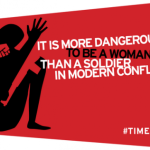In September 2000, at the UN Millenium Summit in New York, the largest gathering of world leaders adopted the UN Millenium Declaration. This document laid out a series of time-bound targets, known as the Millenium Development Goals, with a target of 2015. These are considered to be the world’s time-bound, and quantified targets for addressing extreme poverty in various dimensions. In a nutshell, these MDGs are:
1. To eradicate extreme poverty and hunger
2. To achieve universal primary education
3. To promote gender equality
4. To reduce child mortality
5. To improve maternal health
6. To combat HIV/AIDS, malaria, and other diseases
7. To ensure environmental sustainability. HSF
8. To develop a global partnership for development.


As the Millennium Development Goals (MDGs) reach their December 2015 deadline, a new set of Sustainable Development Goals (SDGs) will be adopted by world leaders as a part of the Post–2015 Development Agenda, at the United Nations General Assembly in September 2015. These SDGs will be formed so as to ensure that the momentum generated by the MDGs is carried forward beyond 2015, to make the world a better place for everyone, alike.
Before the SDGs are formed and adopted, it is important to understand how India has fared, in terms of progress on the MDGs. India has achieved the targets with varying degrees of success. By official as well as international estimates, poverty has reduced by half; India is also set to achieve reducing hunger by half. India has reduced maternal mortality by three quarters, and has controlled spread of deadly diseases such as HIV/AIDS, malaria and tuberculosis. Additionally, forest cover has been increased and the proportion of population without access to clean drinking water has been halved.
However, India is lagging behind on targets for achieving universal primary school enrolment and completion and achieving universal youth literacy. It is also behind in terms of empowering women through wage employment and political participation. For example, the overall labour force participation of women in 2011/12 was at 23%, whereas for men it was at 56%. In terms of political participation, India has only 65 women representatives out of 542 members in Lok Sabha, while there are 31 female representatives in the 242 member Rajya Sabha. Hence presently the proportion of seats in National Parliament held by women is only 12.24% against the target of 50%. India is also lagging behind in reducing child and infant mortality.
Thus as can be seen, while India is on track for achieving the MDGs, there’s still a long way to go in terms of achieving the various set targets. This needs to be kept in mind before finalizing and agreeing to the SDGs.
CSR has been committed to the various causes espoused by the MDGs, and continues to engage in different efforts to achieve the MDGs, particularly in all areas related to gender issues and women empowerment. The “Meri Shakti Meri Beti” Project, which has been fighting the battle against pre-natal sex selection, has been incorporated in the Government’s “Beti Bachao, Beti Padhao” program. The Delhi Government has selected CSR to manage one ‘Gender Resource Centre’ (GRC) in the Usmanpur area of Delhi. The centre has been providing vocational training in cutting and tailoring; conducting courses in beauty culture and non-formal education; organising legal awareness, health and nutrition and OPD camps, amongst other deliverables which are being provided to the girls and women.
Additionally, CSR is committed to the cause of the environment, and believes that women are key drivers in this endeavour of caring for and protecting the environment. We recognize the importance of women in the management of natural resources. In association with the Hans Seidel Foundation (HSF), CSR has an ongoing Water Conservation and Climate Change project. CSR and HSF have been working on this project since 2012, conducting a number of trainings with elected women representations, and active women leaders and volunteers in various districts of Rajasthan. The programme looks at Water Conservation through the lens of gender. It basically involves imparting skills related to water conservation, and other environment friendly practices.
CSR’s efforts, are a significant drop in this ocean, and it is imperative that civil society aids the government’s continuing efforts to meet the MDGs and make the world a better place, by all accounts, and for every living being.
Looking forward to reading your blogs, you can mail us your entries at WriteWithUs@csrindia.org, or upload them at Write With Us.
Donation for Centre for Social Research to Join our effort in rehabilitating Domestic Violence
Discuss this article on Facebook




